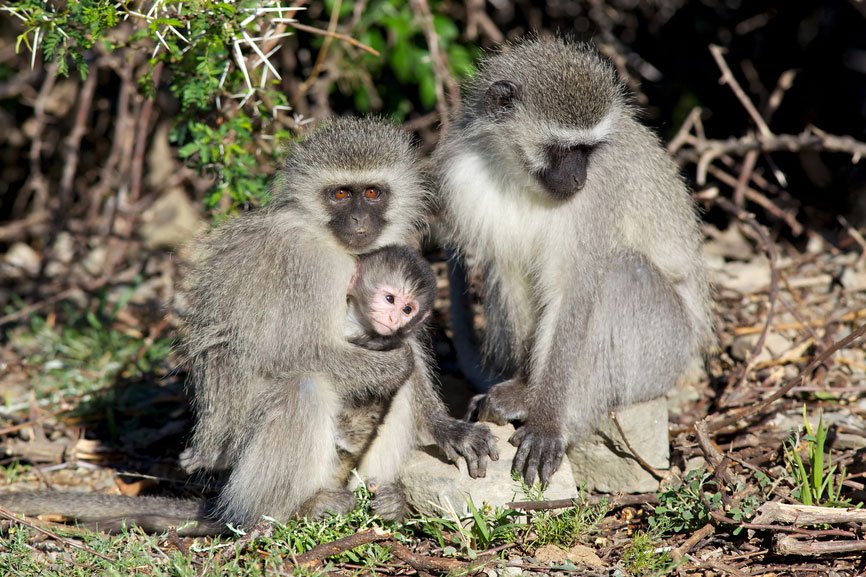Greetings and welcome to another edition of The Shape of The Cape with your host Julescape. Today we have traveled to the Garden Route town called Wilderness, and just on the outskirts, in the rural area around the magical Lakes region, we find a troop of monkeys that live in the hillside bushveld area, just inland. Indigenous wildlife has come to the edge of civilization and today we see and meet them in the back yard.
Wilderness is one of the other gems in the crown of the Garden Route on the south Cape coast of Africa. It can be reached via the N2 highway which starts in Cape Town and winds its way all along the southernmost coastline of South Africa. If you drive for about five hours from the Cape of Good Hope, you will come to Wilderness right at the very point where the highway comes the closest to the actual sea shore. It is one of the most idyllic and underrated seaside resorts in the entire sub-continent.
Now just outside the Wilderness coastal village, is the Lakes area and thereabout, slightly on the inland side of the highway, is where I found the Vervet monkeys in the video clip today. The Lakes area also holds a bird sanctuary and bird hide area, hidden on the lakeside for avid bird watchers. But more immediately we have found these Vervet monkeys (Cercopithecus Aethiops), which are social creatures who live in troops of 10 - 50 sometimes, and are really quite friendly.
They will, however, also invade your house via any open door or window any chance you give them, so locals need to keep the doors closed and are almost held hostage by the monkeys roaming outside looking for a gap to invade the kitchen. Nevertheless, they are adorable and often the females are seen carrying their young, which they are known to cherish fondly. Sometimes one will see an injured monkey among the troop, who has been accepted and helped, not ostracised in any way.
Curiously, the Vervet monkey is indigenous to three regions in the country, including this Garden Route area, so if you enjoy wildlife exploration, this is the area, although you may need to meet and make friends with some locals who will be able to show you the Vervet in their natural habitat, on the hill slops just behind their house beside the lakes. It’s a nature sanctuary which has protected status by the government, as a park or wildlife haven, so you can’t really fish or use motor boats on the lakes at all. This is great for ecology-loving travelers who enjoy seeing wildlife in their natural habitat. Africa consists of more than the lion and elephant of the big parks, but actually has numerous small and inconspicuous park areas with plenty of smaller and less well-known species, like monkeys, birds, fish and insects.

And the monkeys are part of the local natural habitat too. The troop seen in the video clip have been observed in this same area for two or three years now, and in season are seen with new little offspring that they carry around when visiting the house. They hang out in the trees waiting for some compost scraps to manifest from the kitchen. Locals bury the compost but the monkeys dig it up, so we tolerate them, since they are so harmless and it’s easy to grow fond of them, despite the mischievous behavior occasionally, stealing into the house and raiding the fresh produce. It’s a love-hate relationship, in the sense that we want to nurture them but we can’t encourage them too much either. So it’s a fine line, but a fond line built between humans and monkeys as they live side by side and “cheek by jowl” with each other.
Thanks for checking in here at The Shape of The Cape and seeing the indigenous Vervet monkey in their natural habitat as they share it with us humans. Be sure to check in next time for more beautiful natural treasures of the Garden Route region on the south Cape coast of Africa.
Picture & more info on the Vervet can be found at this website:
https://www.sa-venues.com/wildlife/wildlife_vmonkey.htm
View this post on TravelFeed for the best experience.

